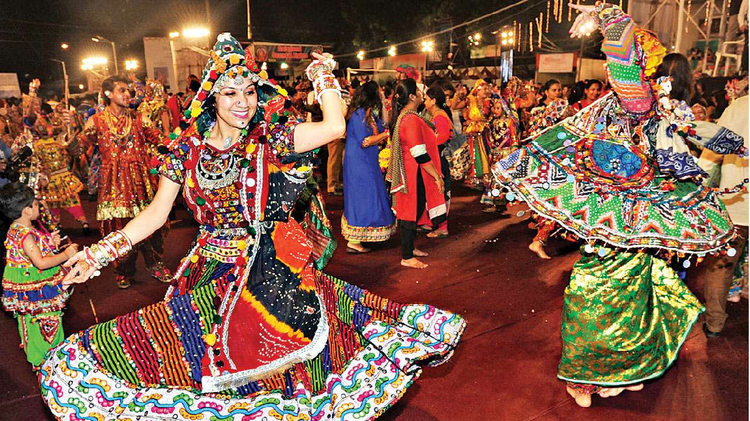For smooth Ad free experience
For smooth Ad free experience
When someone mentions Gujarat, the first thing that comes to mind is vibrancy, culture, color, and Garba. Gujaratis love to celebrate every auspicious day with great pomp, show, and celebration, as it is one of the most ancient festival lands. And without Garba, you can’t describe Gujarat.

Fast-paced and vibrant dance
Another interpretation is that the lamp represents divinity. The same is true for people, where divinity resides at the core of their being and only needs to be recognized and sustained over time. Garba dance, on the other hand, has significant cultural significance. The costumes, songs, and gathering of people highlight its true worth and popularity. Women typically wear a chaniya choli with a dupatta in the Gujarati style. The clothes are usually red, orange, yellow, or bright vivid colors with mirror work, which is one of the state's main embroideries. Women wear heavy jewelry, such as jhumkas, Payal, chudas, bajubandh, and other traditional accessories. The men also wear traditional attire, such as pajamas, ghagras, and pagdis made of Bandini fabrics and mojris. The dressings used during Garba are its main cultural stronghold, with roots found and maintained in its state of origin. The songs are mostly in Gujarati, and despite its many modern influences, it's difficult not to associate Garba with its traditional roots. With remixes and Bollywood influences, as well as global mass appeal, the fundamental idea and execution of the traditional dance form have not changed significantly as a result of foreign influences.
The most valuable aspect of Garba is its enjoyment factor. The social interaction, combined with the high energy and enthusiasm, make it one of India's most popular dance forms. It's difficult not to get caught up in the whirlpool of frenzy and action when a Garba performance takes place, no matter where you are. It's also difficult not to find yourself tapping your feet and swaying to the beats of a language or music you may never fully comprehend. It is the coming together of life, which is vibrant, happy, and in many ways circular. There are good times, bad times, and worrying times. There is joy, sorrow, confusion, and anger, and it all moves in cycles. Thus, the symbolism of Garba is about living in the moment, letting inhibitions go, and enjoying the aliveness and absolute spiritedness of life.
0
You might be interested in reading more from
